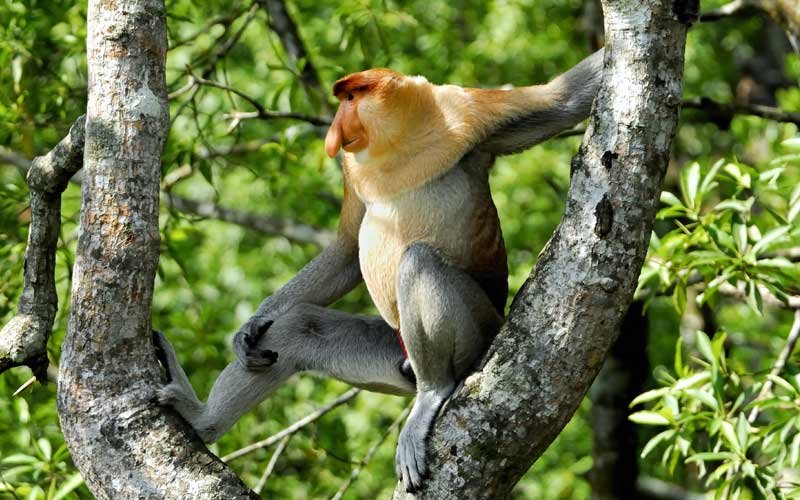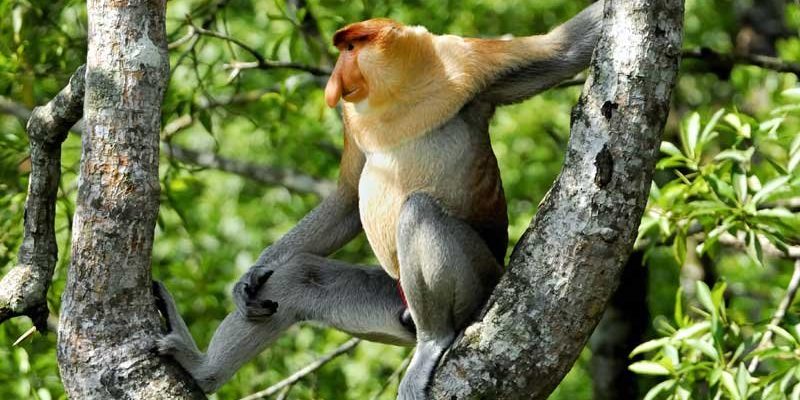
Proboscis monkeys are found primarily in the lush rainforests and mangrove swamps of Southeast Asia. If you’ve ever looked at a map of Borneo or the surrounding islands, you’ve gotten a glimpse of their playground. Their natural environment is vital not only for them but also for the balance of the ecosystems they inhabit. Let’s dive in and explore where these remarkable creatures live, what their habitats are like, and how their presence impacts those environments.
Geographical Range of Proboscis Monkeys
Proboscis monkeys are primarily located in the rainforests of Borneo. This sprawling island is divided into several regions, and these monkeys thrive in areas where there are plentiful trees and abundant water sources. They also inhabit regions of Sumatra and parts of Malaysia. When you think of their range, imagine a jigsaw puzzle. Within this puzzle, the pieces fit together to form a mosaic of forests, rivers, and mangroves.
Interestingly, these monkeys prefer areas close to rivers and swamps. They’re excellent swimmers, which helps them escape predators or find food. You might be wondering why they specifically choose these areas. The answer lies in their diet and lifestyle. By living near water, they can easily access the leaves, fruits, and seeds they love to munch on.
Types of Habitat
The habitat of proboscis monkeys is diverse but mainly consists of two types: lowland rainforests and mangrove forests. Let me explain what makes these habitats special.
1. Lowland Rainforests: These are dense, tropical forests filled with towering trees, shrubs, and vines. The warm, humid conditions make them perfect for a wide range of plants and animals. Proboscis monkeys spend a lot of time in the tree canopies, where they leap from branch to branch, displaying their remarkable agility.
2. Mangrove Forests: These are coastal ecosystems where trees grow in salty water. They act as critical buffers against storm surges and provide a rich habitat for various wildlife. In these environments, proboscis monkeys can find food and shelter, particularly because they often munch on the leaves of mangrove trees. You could say these environments are like an all-you-can-eat buffet for them!
Climate and Environmental Factors
The climate of the regions where proboscis monkeys live is typically hot and humid, with plenty of rainfall throughout the year. This is crucial for their habitat, as the rain nourishes the vegetation that supports their diet.
You might ask, “What if the climate changes?” That’s an important question! Changes in climate can lead to habitat loss, which poses a serious threat to these monkeys. As their homes become fragmented or disappear due to logging and land development, proboscis monkeys struggle to find enough food and safe places to live. Imagine if your neighborhood was suddenly reduced to only a couple of houses—life would get pretty tough, right?
Social Structure and Adaptations
Proboscis monkeys are known for their complex social structures. They typically live in groups called harems, which consist of one dominant male and several females along with their young. The males are quite large, and their distinctive noses play a role in attracting mates. The bigger the nose, the more attractive they are! So you see, it’s not just for show; it has a real purpose.
Within their habitats, these monkeys adapt remarkably well. They use their long limbs for climbing and their unique noses for vocalizations that help communicate with each other, especially in dense forests where visibility is low. They have a keen sense of smell, which helps them locate food and avoid danger. It’s like having a built-in GPS and alarm system all in one!
Conservation Status and Threats
Sadly, proboscis monkeys are classified as endangered. The threats they face include habitat destruction due to logging, agriculture, and infrastructure development. This is where it gets concerning, as their populations continue to decline.
Conservation efforts are underway to protect these unique animals and their habitats. Various organizations work to promote sustainable practices and create protected areas where these monkeys can thrive without human disturbance. If you think about it, protecting proboscis monkeys means preserving the entire ecosystem they depend on.
Why Does Their Habitat Matter?
Understanding where proboscis monkeys live is crucial not just for their survival but also for the health of their habitats. Healthy ecosystems support diverse wildlife and benefit humans by providing clean air, water, and resources.
When we think about conserving places where proboscis monkeys dwell, we’re also thinking about protecting the intricate balance of nature. Their presence can indicate the well-being of the ecosystem, like a canary in a coal mine. If they’re not thriving, it often means something larger is out of balance.
Proboscis monkeys may look whimsical with their oversized noses, but they play a serious role in their habitats. Their lives, intertwined with the rainforests and mangroves of Borneo and beyond, reveal just how delicate the balance of nature can be. Preserving their homes is vital for maintaining biodiversity and ecosystem health.
As we explore the world of these fascinating creatures, we become more aware of our impact on their lives and environments. So, next time you see a proboscis monkey, think about the vibrant habitat they call home—and how we can all play a part in preserving it.

